Women in War: From the American Indian Wars to the American Civil War

The experiences of women in wartime have been less well documented than those of men. Their contributions, their sufferings and heroism merit closer attention. The wealth of digitized primary sources in Readex collections offer fresh opportunities for researchers to study women who lived through, and often participated in, conflicts across multiple centuries and continents. In this post, we will touch on the diverse roles played by women in American wars from the early days of settlement through the middle of the 19th century.
The earliest European settlements in North America conflicted with the various Indian tribes which populated the eastern lands of the continent. One popular type of publication was the captivity narrative. In 1754 Susanna Willard Johnson and her family were taken captive by the Abenakis and held for four years. After her release she published a popular account.

In 1839 a play appeared in the United States titled “The Bride of Fort Edward: A Dramatic Story Founded on an Incident of the Revolution.” The drama was a somewhat fictionalized version of the true story of Jane McCrea who was a twenty-five year old engaged to a Loyalist in Burgoyne’s army when she was killed by an Indian warrior connected to the British. Her adventure was also used by James Fenimore Cooper in “The Last of the Mohicans.”
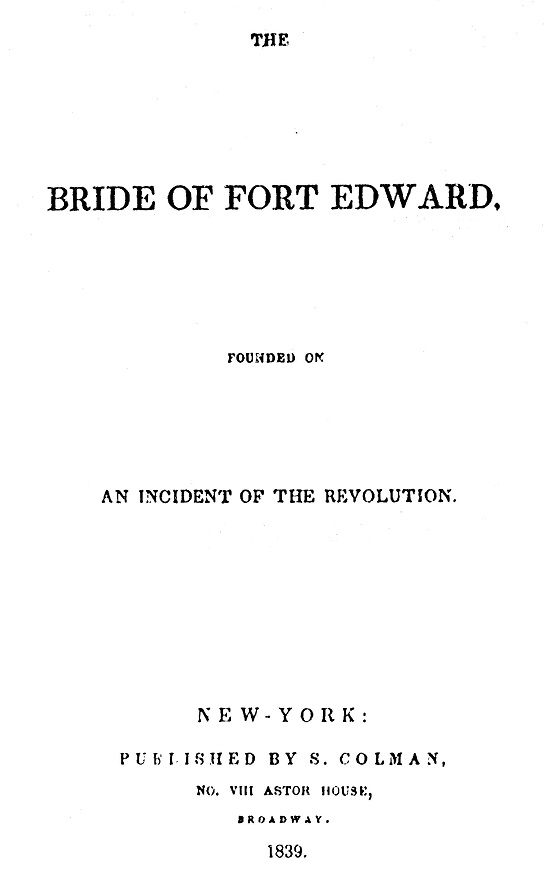
Among the women who disguised as men and took up arms, Deborah Sampson Gannett stands out for her participation in the Revolution and her post-war activities. For many post-war years she lectured on her experiences but she was unable to support herself until her friend Paul Revere persuaded Congress to grant her a pension. She died in 1827 and was lauded in the Philadelphia Public Ledger ten years later.
A petition has also been received from a Benjamin Gannett, who asks for relief as the widower of a revolutionary soldier, named Deborah Gannett....She was at the capture of Cornwallis, was wounded at Tarrytown by a musket ball, which was never extracted; the effects of which would followed her throughout life.
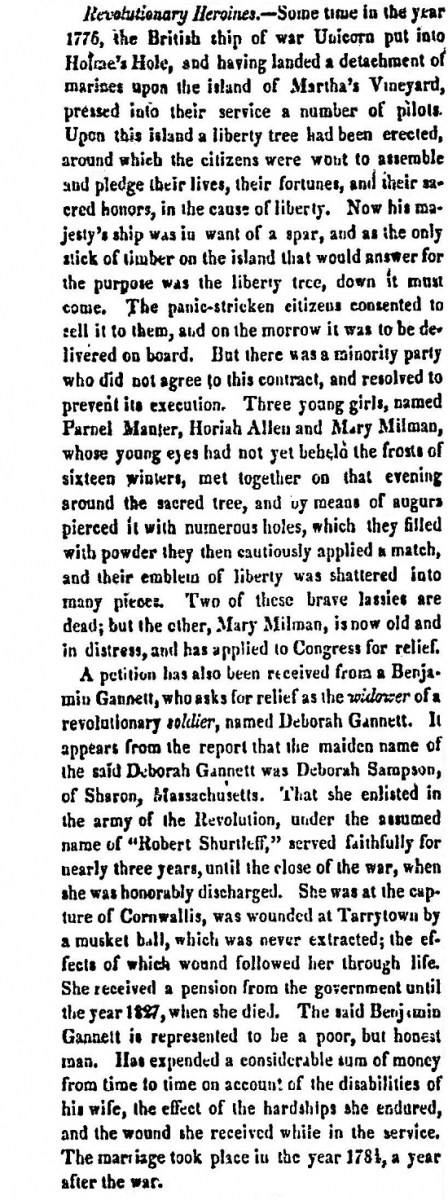
As the role of women in civil society expanded during the Early Republic era, a pamphlet appeared in 1811 titled “An Address to the fair daughters of the United States, calling on them for their advice and interest in the present important crisis.”
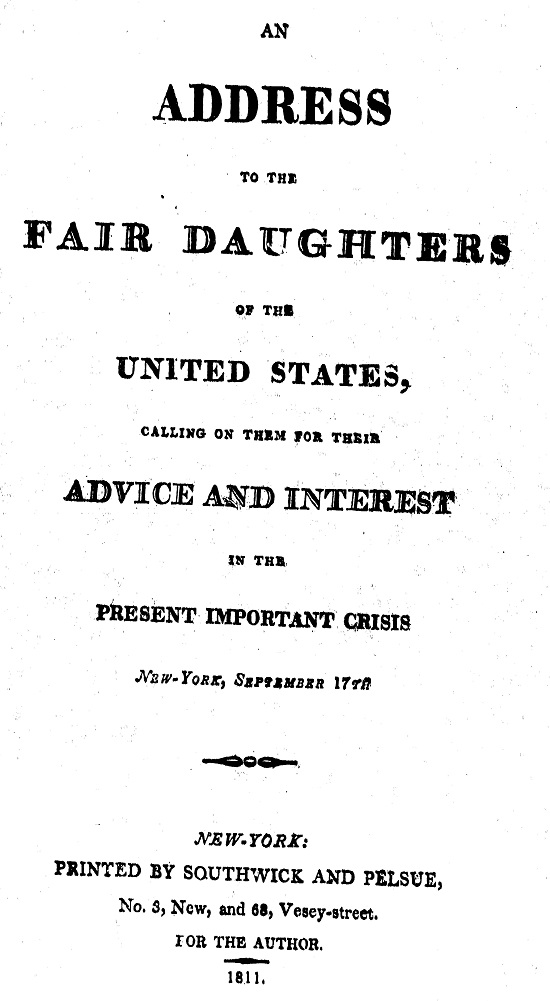
The year 1816 brought the publication of “The Female Marine, or, Adventures of Lucy Brewer a native of Plymouth County, Massachusetts…” which purported to be the autobiography of a young woman who, disguised, took part in naval battles on the U.S.S. Constitution for three years during the War of 1812.
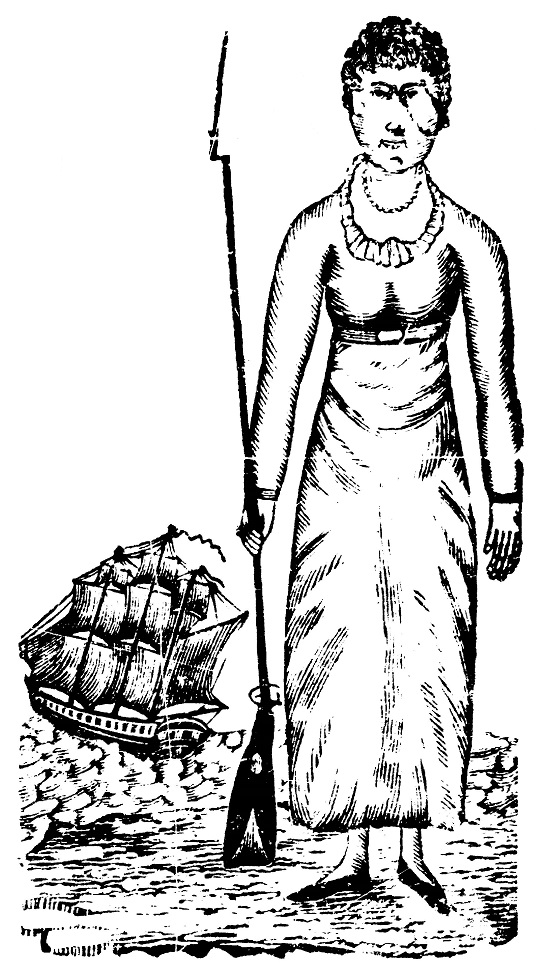
A complementary tale was told in a play published in 1887 which dramatized the travails of Laura Secord who spied for the British during the same war.
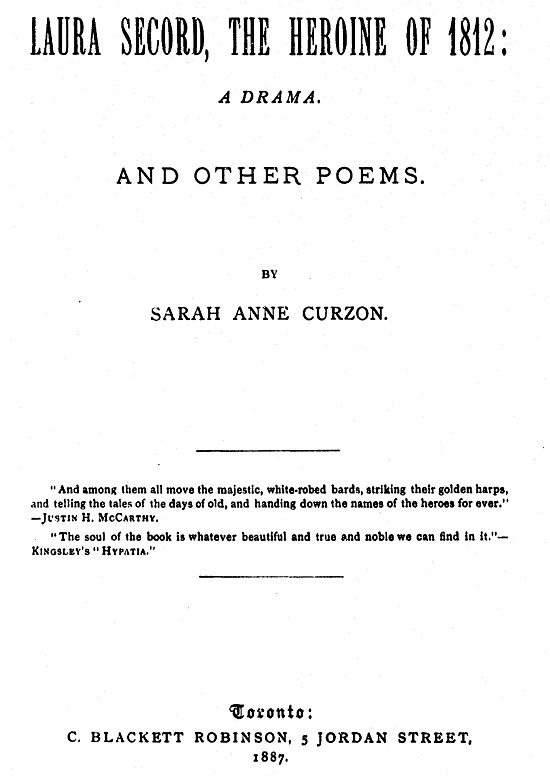
Women have ever been widowed by war. An article in the Omaha World-Herald published January 11, 1891, detailed pensions being paid to veterans and their widows from the Revolution through the Civil War.
Twenty venerable women whose husbands "fit" for American Independence are carried upon the pension rolls. It is amazing how the widows of soldiers hold on.
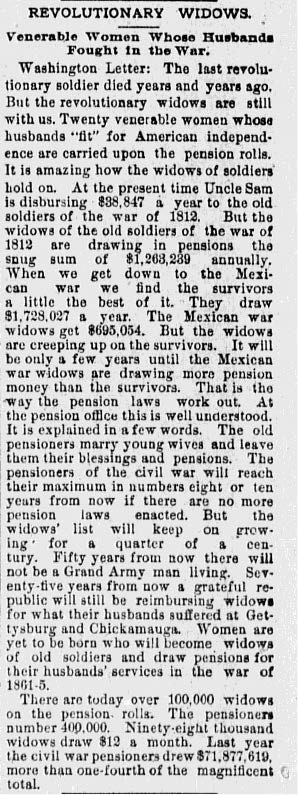
Throughout the 19th century, the press vividly described wars with Indians. The lurid tale of the Barber family in Georgia combined Indian massacre of whites and a captivity narrative because Mrs. Barber survived her husband and seven children. She was captive for six weeks before escaping.
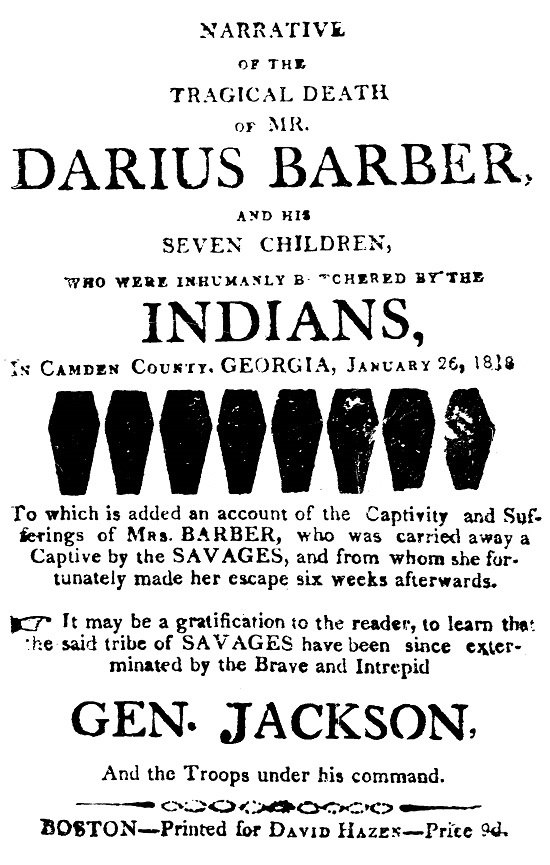
In June of 1832 the Torch Light of Hagerstown, Maryland, republished a handbill being distributed in the Louisville Advertiser fervently calling for citizens to join an attack on Indians in Illinois who killed fifteen white people and abducted two young women.
War, War....Two highly respectable young women, of 16 and 18 years of age, are in the hands of the Indians, and if not already murdered, are perhaps reserved for a more cruel and savage fate.....Rise, follow citizens of this City and Country—Let us no longer delay—Talk no more, but act.
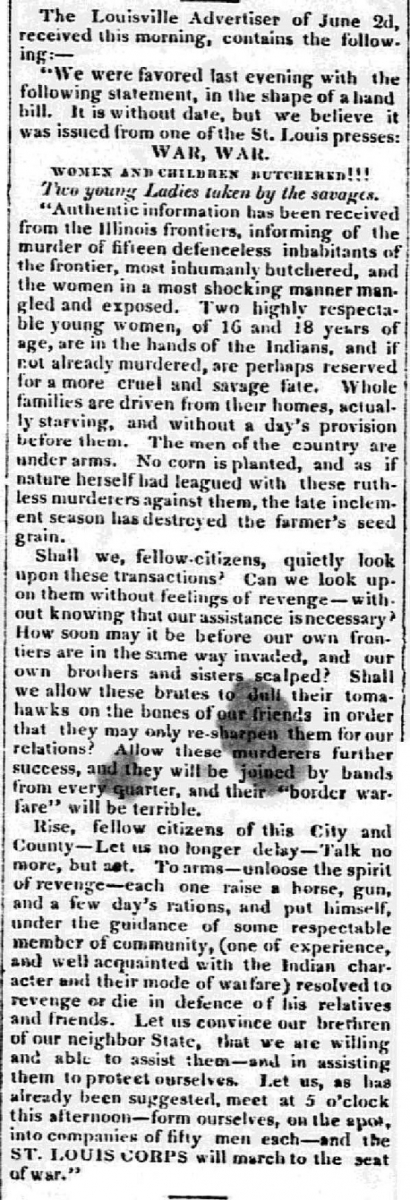
The Civil War ushered in a vastly expanded and acknowledged role for women particularly in the Union. Perhaps the most extensive role for women became nursing and feeding the soldiers. From the outset of the war women were essential to the organization and endeavors of the United States Sanitary Commission.
The Commission appeals to the women of the country for its support....Its object is to get from every woman of New England such assistance as she is able to give, in money, clothes, socks, yarn, feathers, or other available materials.
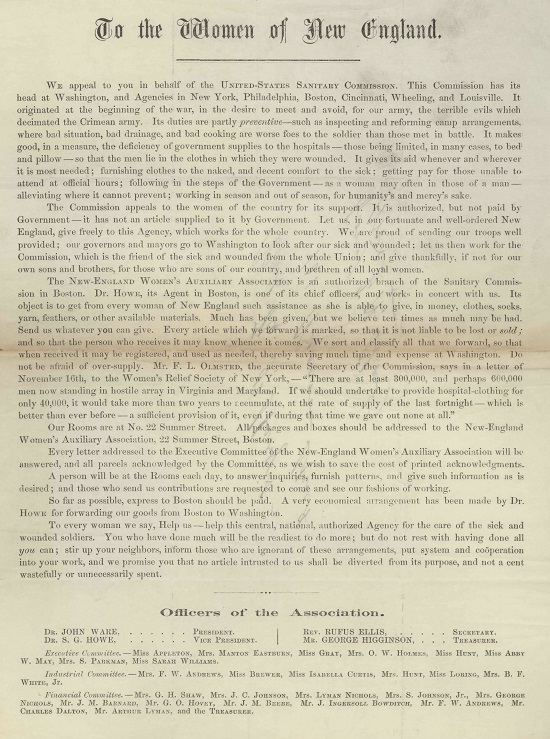
As with previous American wars, most accounts of women during the Civil War were not published until many years later. One exception, which appeared in a pamphlet 1862, is the remarkable tale of Sarah L. Palmer, a native of Pennsylvania, who was a teacher in Knoxville, Tennessee, when the war broke out. It is fiction, albeit fiction based on Susan Brownlow, the real daughter of the real Parson Brownlow who was an outspoken and published Unionist in Tennessee. Susan may have defended the American flag with a pistol.
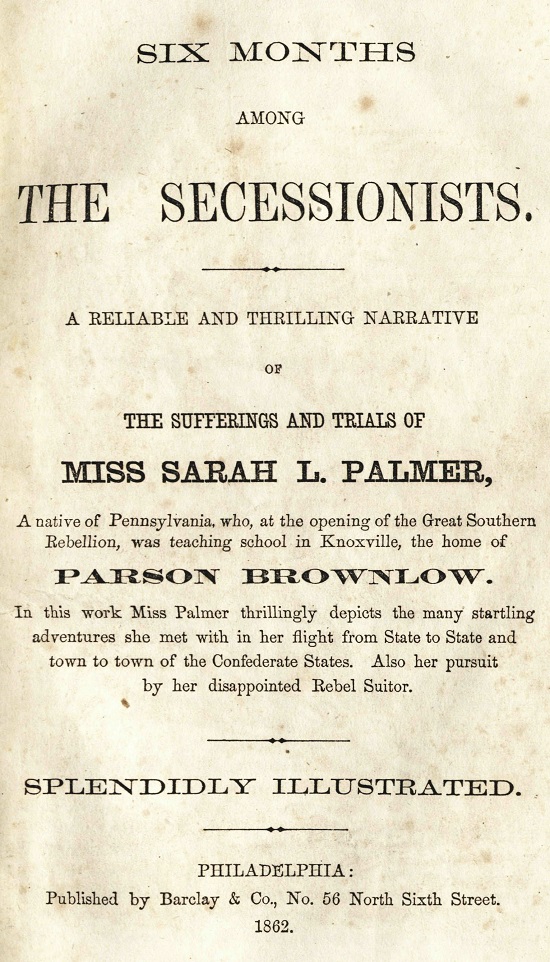
Louisa May Alcott, who spent six weeks as a volunteer nurse, published Hospital Sketches in 1863. It honors the thousands of women who acted as nurses throughout the war.
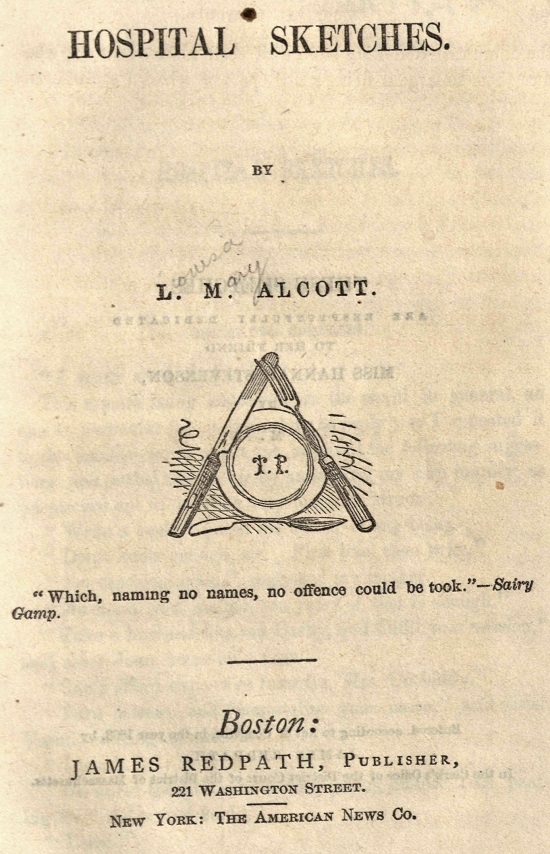
While many of these courageous nurses are lost to history, there were giants among them. Mother Bickerdyke was a legend. In the post-war era she received a lot of positive press. The Bismark Tribune published a profile in 1887.
In the early months of the war she was the only woman nurse in the large hospital at Cairo, Ills. She was a woman of strong character, fine executive ability, much energy and reserve force in emergencies.....The soldiers of the west proposed to tax themselves ten cents a year to maintain her above want, but she refused to accept the money.

In contrast, the Richmond Enquirer published an editorial in April of 1863, which was reprinted by the New York Evening Post, that reproved the women of Richmond for indulging in expensive dress.
As for the moneys given in payment of English and French fabrics which come to us direct through the blockade, and which are not furnished to our market by Yankee merchants...those moneys are not indeed gained by the enemy, but they are lost to us, and in this way a gain to the enemy.
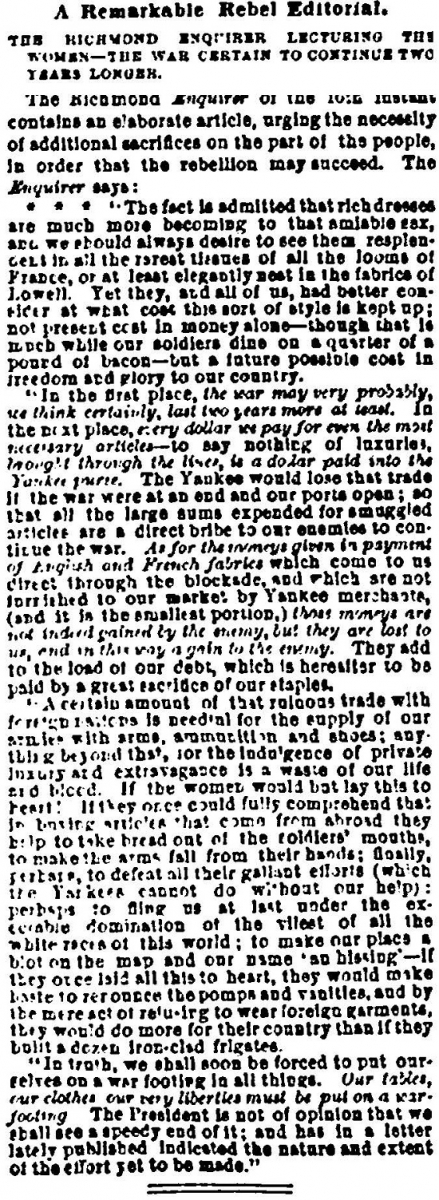
There were women spies during both the American Revolution and the Civil War. One of the most famous was Pauline Cushman, who was lionized in a pamphlet that appeared in 1864.
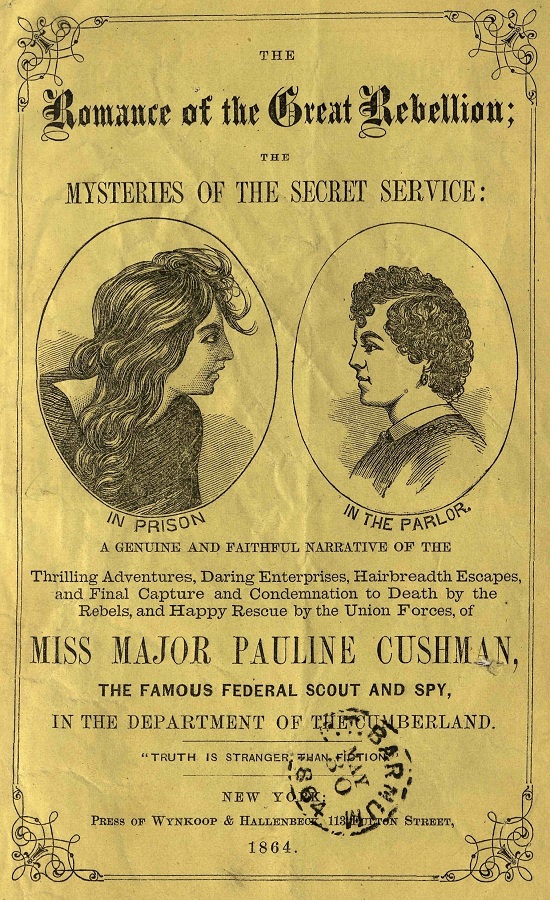
As in both the Revolution and the War of 1812, there were women who disguised themselves and enlisted during the American Civil War. On March 28, 1884, the U.S. Congress’s House Committee on Invalid Pensions reported in favor of a bill to award a pension to Sarah E.E. Seelye whose nom de guerre in the Civil War was Franklin Thompson.
Truth is sometimes stranger than fiction....Sarah Emma Edmons, now Sarah E. Seelye, alias Franklin Thompson, is now asking this Congress to grant her relief...
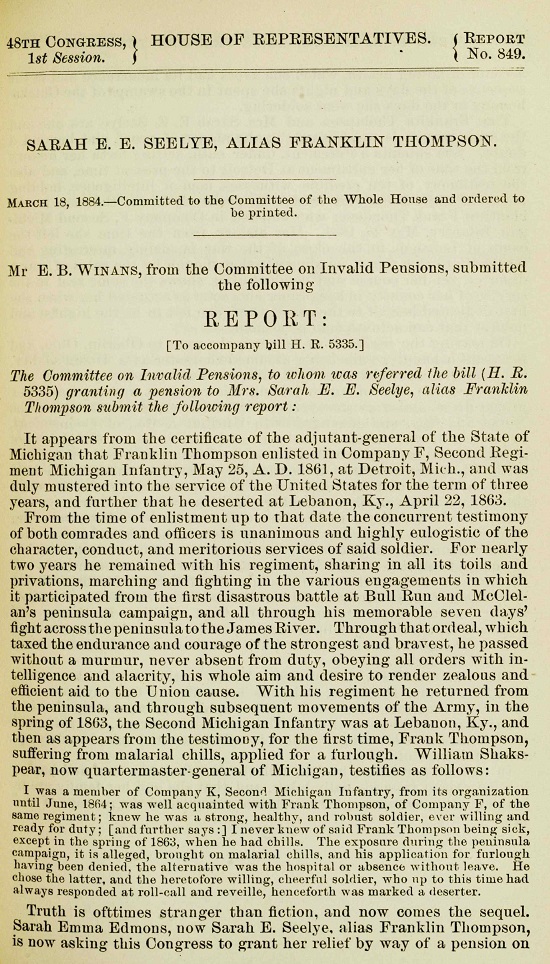
The Philadelphia Inquirer featured an article in its October 21, 1884, issue under the headline “Women Warriors. Maids and Matrons Who Served as Soldiers and Spies during the Civil War.” The article recounts the exploits of several woman who took up arms or enlisted as spies. Although some of them achieved subsequent renown, there were others who remained relatively obscure.
Wherever there is a reunion of the old warriors there are also stories of the women who served as scouts and spies and fighters in the Civil War. Many distinguished themselves, and they were as plentiful in the Southern as in the Northern army.
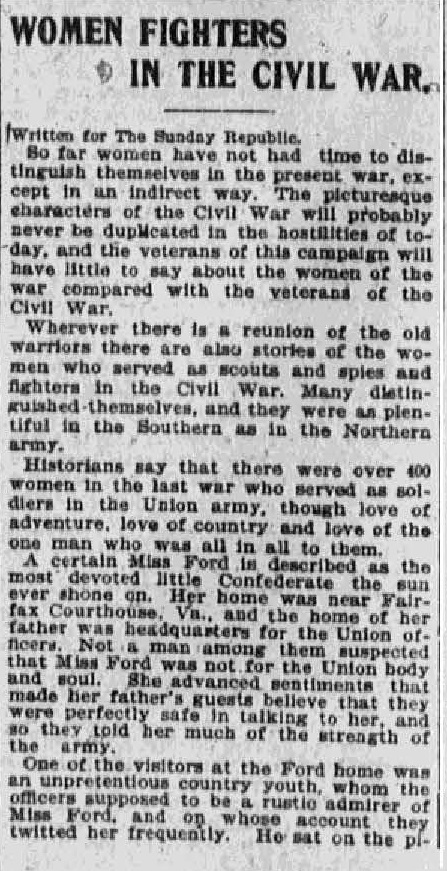
The primary sources described above are a small sampling of the myriad documents in Readex products that are highly relevant to exploring women in war. These women fought, spied, provided nursing, food, hygiene. They practiced thrift, made clothes for the soldiers, and they prayed. Their contributions were critical to the fighting forces.
For more information about Readex AllSearch or any of the many primary source databases mentioned above, please contact Readex.



